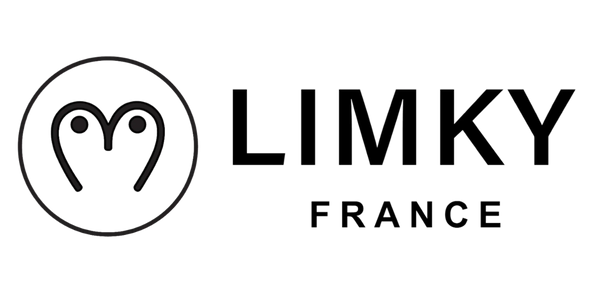
Breastfeeding Is my baby eating enough?
Share
BREASTFEEDING: IS MY BABY BREASTFEEDING ENOUGH?
You are breastfeeding your baby and it is a beautiful moment of sharing!
But like many moms, you wonder if he's eating enough...
Impossible to know the exact amount of milk he drinks at the breast but don't worry, we tell you everything to check if your baby is getting enough to eat!
This is certainly the main difficulty for breastfeeding mothers : knowing if their baby has eaten or drunk enough . But there are simple ways to tell if your baby is eating enough .
HOW TO KNOW IF BABY IS EATING ENOUGH?
Your breastfeeding starts slowly during the first weeks of your baby's life.
Sometimes you feel like you spend your day breastfeeding.
What is certain is that the first three weeks are the most difficult weeks of your breastfeeding. Many feedings, sometimes long, sometimes disjointed, sometimes painful, with many unknowns and questions that add to all the questions that invade us from the first days of our new life as mothers.
But don't worry, this is completely normal, and it is also normal for the child to breastfeed every 2 hours for the first few days . Of course, it depends on the kids.
Weighing it will certainly allow you to know if your baby is fed enough and continues to grow according to the curves of a breastfed baby (according to the WHO available here 👈 ) . But that's not all.
Some tips will help you gain confidence and less doubt about the quality of your breastfeeding.
- A baby breastfeeds on average 8 to 12 times a day during its first month of life, often every hour and a half to three hours.
This number is an average and some babies may breastfeed less frequently while others will breastfeed more often. Less frequent feedings are only a problem if the baby is not gaining enough weight (source Leche League)
- A baby who is suckling well, has his mouth wide open and has your whole nipple and areola in his mouth. His nose is exposed while his chin is buried in your breast (his whole face and his little hands contribute to the stimulation of your lactation).
- A full baby has his hands open, and is relaxed
- After feeding, your breasts have softened, they are empty and softer.
- After a week of life, you can count about 5-6 very wet diapers
- Your baby's urine is pale and odorless.
- Your baby's stools are yellow, golden, lumpy, soft or liquid and are frequent (at least the first three days) they can then be more liquid.
- When baby is actively suckling, you see him swallow with the movement of his jaw to the level of his earlobe.
- Your baby stops suckling on his own.
a little girl takes about 190 grams per week and a little boy takes about 230 grams per week. These numbers are AVERAGES.
During the following two months, the AVERAGE weight gain is 140 g/week for girls and 150 g/week for boys (Source Leche League)
HOW TO IDENTIFY THAT YOUR BABY DIDN'T EAT ENOUGH
Many mothers ask themselves: " Do I have enough milk?" or " is my milk nutritious enough?" " Has baby eaten enough?" ".
It is always said that a baby never starves itself to death , however, not all babies always cry for food. And since crying is the baby's only means of communication in its first few days of life, crying can mean a lot of different things. It is therefore sometimes difficult to decode them.
But other signs that accompany crying can help you identify your baby's hunger:
- Baby does not gain enough weight over several days , referring of course to the growth chart of breastfed babies provided by the WHO
- Your breasts are still firm, even full, after feeding
- Your baby seems limp, lacking tone
- Your baby's tongue clicks when feeding, a sign that your baby is not latching on properly in the mouth. So be sure to remove it, try again and if necessary, consult an IBCLC certified lactation consultant.
- Your baby does not pass stools and wets too few diapers in 24 hours.
OUR TIPS FOR BREASTFEEDING WELL
Many mothers say they have pain during breastfeeding, while specialists repeat that breastfeeding does not hurt and should not hurt.
Two realities that seem to contradict each other.
But this is far from being the case.
Many mothers, without knowing it, are in pain during feeding simply because they are not sufficiently well installed , tense , support all the weight of the baby on their arms without cushion. Or when the baby is badly positioned and takes the nipple badly in the mouth.
If you are experiencing pain, above all, try to make yourself as comfortable as possible , with your whole body relaxed , from the neck to the lower back and including the shoulders. We can never say it enough: for baby to be well installed and positioned, you must already start with a mother who is well installed comfortably.
The ideal position is usually the seated breastfeeding position, with your legs slightly elevated.
Your infant's nose is positioned well in front of you, level with your nipple.
If the feeding is painful, the position is not good: start again until your little one feels comfortable enough to eat.
For the first few weeks, so that the establishment of lactation is done quickly and correctly, offer him both breasts at each feeding.
And if you continue to have questions, contact an IBCLC-certified lactation consultant or turn to self-help associations for mothers such as LECHE LEGUE , L'OR Blanc , Lactation tout un art .
Sites such as Vanilla Milk are reliable sources of information and directories of professionals available to help you while breastfeeding.






















